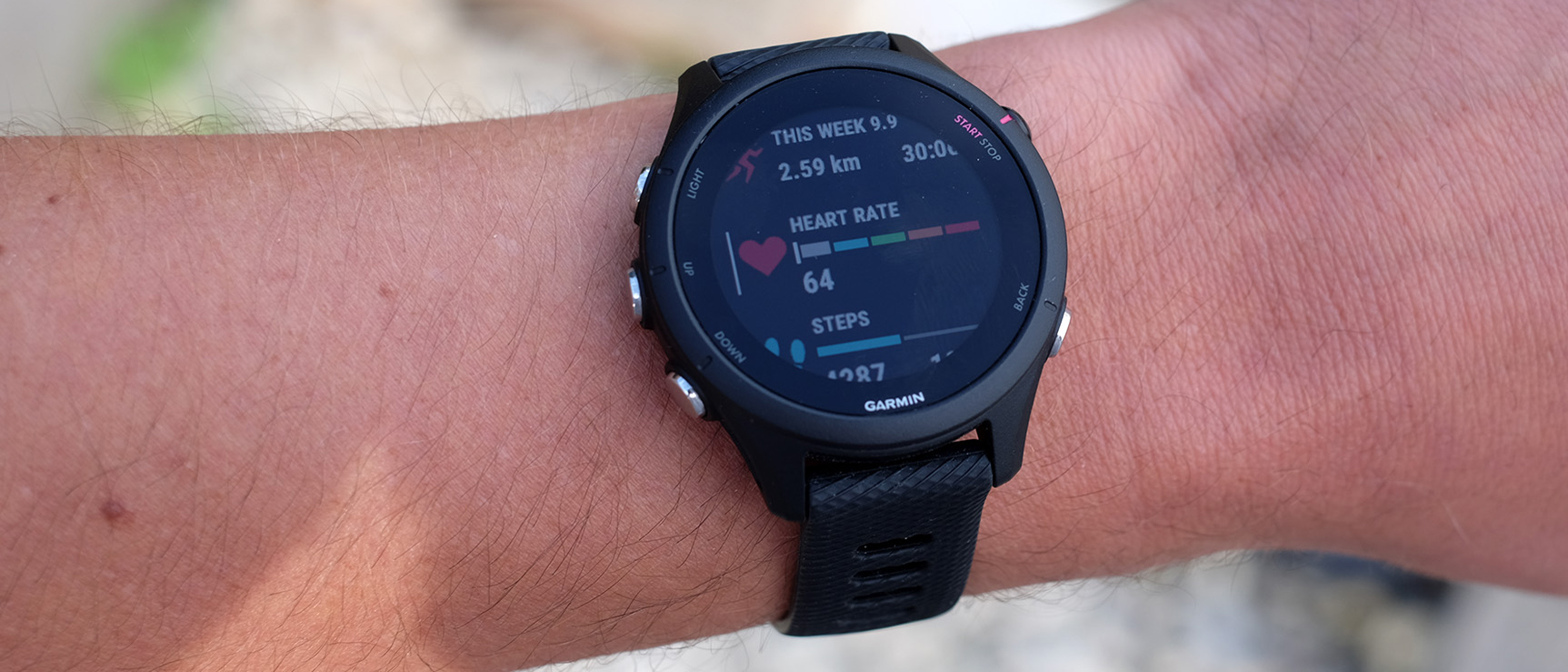Live Science Verdict
The Garmin 255 is one of the best value Garmin watches for those who want serious stats in a light band, and don’t plan on using the watch deep underwater.
Pros
- +
Light and comfortable
- +
Has higher-end software features like Training Status
- +
Practical MIP display
Cons
- -
No maps or Golf mode
- -
Shorter battery life than the sister Instinct 2
- -
Some slight HR inconsistencies at higher exertion levels
Why you can trust Live Science
The Garmin Forerunner 255 is one of Garmin’s most approachable “serious” fitness watches, being less bulky than the Garmin Instinct 2 and cheaper than the Forerunner 955.
What do we mean by serious? The Forerunner 255 records VO2 Max scores and has features like Training Status, a great way to judge if your workout routine is on track — and help stop you losing momentum. Lighter touch watches, like the Garmin Venu 2, may feature in our guide to the best Garmin watches, but they do lack these enthusiast favorites.
Display: 1.1in 218 x 218 MIP
Storage: Up to 4GB
GPS: Yes, Multi-Band GPS
Water resistance: 5ATM
Weight: 39g
Size: 41mm x 41mm x 12.4mm
Glass: Gorilla Glass 3
We are reviewing the Forerunner 255S Music, a tiny version of the watch with 4GB storage for music and podcasts. It maxes out on what makes this particular range appealing. You get more than a taste of the hardcore side of Garmin’s wearables, without as intimidating a price or a bulky design.
It’s an absolute joy to use, but when there are no real duds in Garmin’s Instinct, Venu, Forerunner and Fenix lines, the job of this review is to figure out if this is actually the right Garmin for you. The main reasons it might not be are that the Forerunner 255 does not have a golf mode or downloadable maps. If you want those, consider the Forerunner 955 instead.
Plan on using the watch in the water for anything but surface-level swimming and demand mega battery life? Get the Garmin Instinct 2 instead. It has far superior water resistance.
Price and Availability
The Garmin Forerunner 255 series was announced at the start of June 2022. There are four key models. The watch with a smaller 41mm diameter casing is called the Forerunner 255S, the larger 46mm model is the plain Forerunner 255.
Each is available as a standard or “Music” variant, which adds 4GB storage and support for Spotify, Deezer and Amazon Music downloads. There’s no difference in price between the sizes, but you’ll pay an extra $50/£50 for music support.
Non-Music Forerunner 255s cost $349/£299, the higher-end models $399/£349.
Design
The Garmin Forerunner 255 is a fairly plain watch. It doesn’t have the built-up bezel of a rugged wearable. The MIP display is very low-key and the entire casing, bar the display glass and metal buttons, is plastic.
Garmin isn’t out to impress the hardcore fitness crowd, even if this is a relatively “hardcore” watch. Its job is to offer something capable for those who don’t want to advertise that exercise is their primary hobby in their wrist wear.
This easy-going impression is even stronger with the particular Forerunner 255S Music model we have. It is small, and very light (39g), possibly the single best sports watch you can get if you want something innocuous that is packed with nerdy features under the surface.
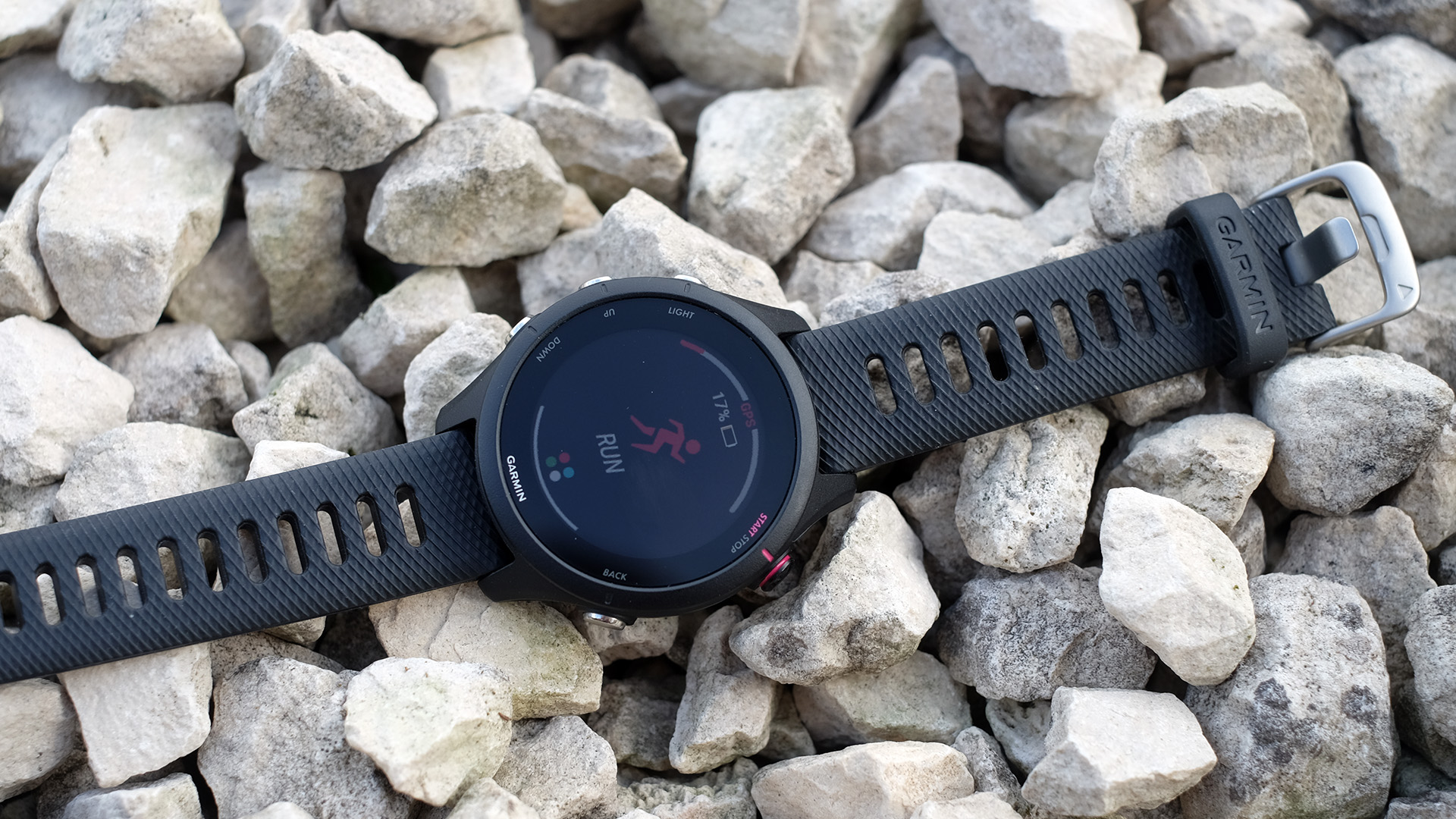
The one potential problem with the design is something it shares with the Forerunner 955. Both watches have 5ATM water resistance, just like an Apple Watch Series 7. Switch to the more chunky-looking Garmin Instinct 2 and you get 10ATM water resistance.
These figures mean the watches can survive at 50M and 100M depth respectively. But those numbers are deceptive, as they don’t account for the additional pressure of movement in water. 10ATM is much better if you want to snorkel and dive a way under the surface.
Display
Is the Garmin Forerunner 255S’s small display a problem? Our watch has a 1.1-inch 218 x 218 pixel display. It is little, and like most other Garmin watches with MIP screens, a big black border sits around the display so it does not fill the watch’s face.
This might be a problem in a smartwatch, but is not a huge issue in the Forerunner 255S thanks to the simple ways the Garmin interface relays information. Dig deeper into the software and you’ll see information-rich screens that show heart rate graphs, step count charts and so on. But the high-contrast, low-fuss presentation means it is not unclear even at 1.1 inches.
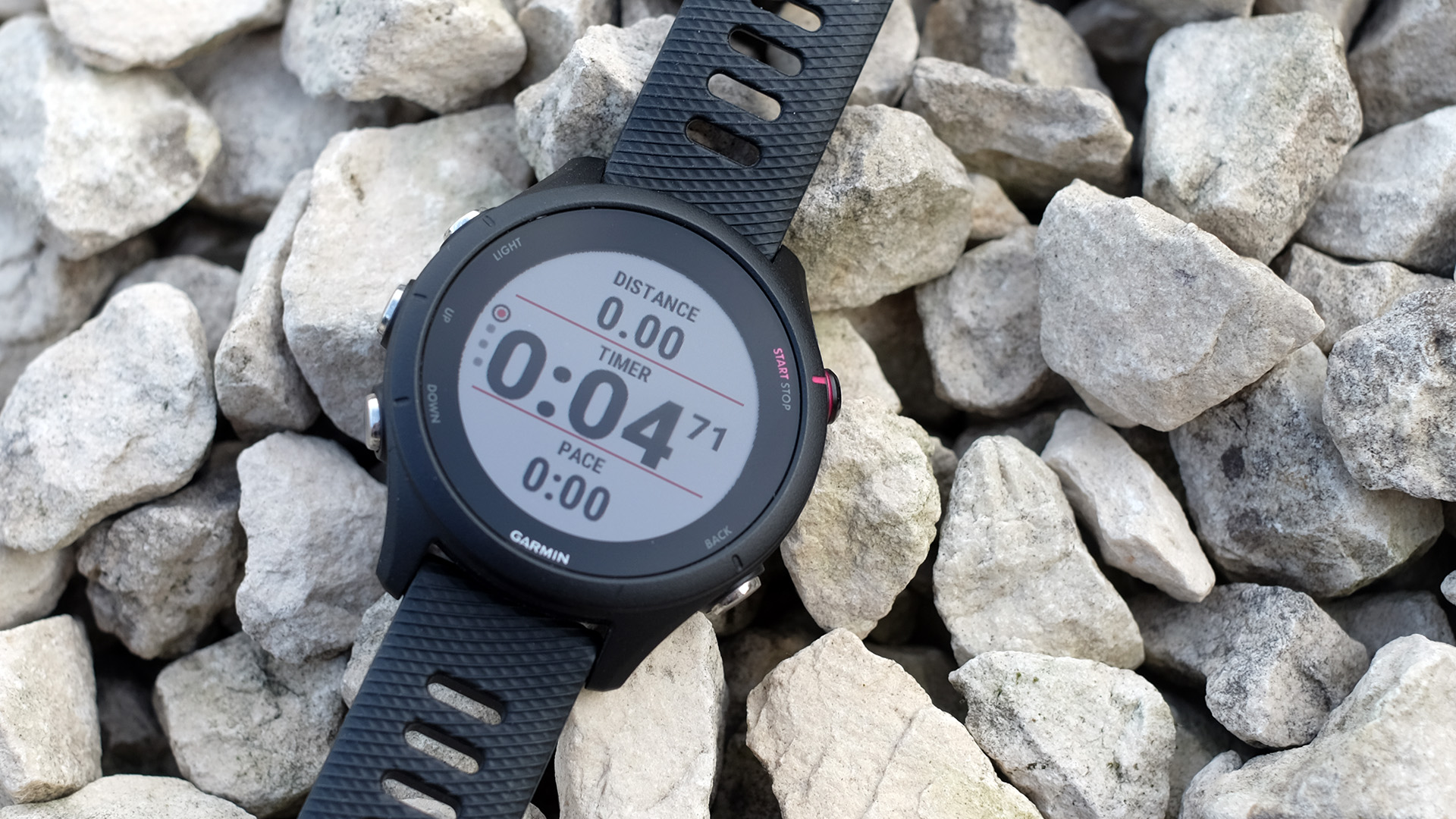
The core display tech itself is much the same as that of a Forerunner 955 or Fenix 7. This is a color transflective MIP screen, one that feeds off ambient light rather than competing with it, for excellent outdoors clarity.
It only needs to be actively lit in darker rooms, and barely uses any power to display something on-screen. Unlike a smartwatch, the screen is “on” 24/7 by design. As such, these Garmins make excellent watches.
However, the Garmin Forerunner 255 does not have a touchscreen. All control is through the five buttons on the side of the watch face. Garmin added touch to a stack of models this year, but not the 255.
This gives the Forerunner 255 the classic Garmin watch feel. If you’d rather use a touchscreen, have a look at the Garmin Venu 2 instead. It has a bright and colorful OLED display, and takes a more casual approach to stats. It won’t record VO2 Max scores in the same way, and does not track your Training Status. But we still rate it highly for everyday exercise tracking.
Features
Not sure what things like Training Status do? These are some of the top reasons to get a Forerunner 255 over either a Venu 2 or another cheaper runner’s or fitness watch.
Training Status analyzes your routine and tells you each day whether you’re maintaining, in recovery, detraining or making progress. It’s one of the more effective ways wearables keep you on track — if mostly because Garmin signaling you’re losing progress is never a good feeling.
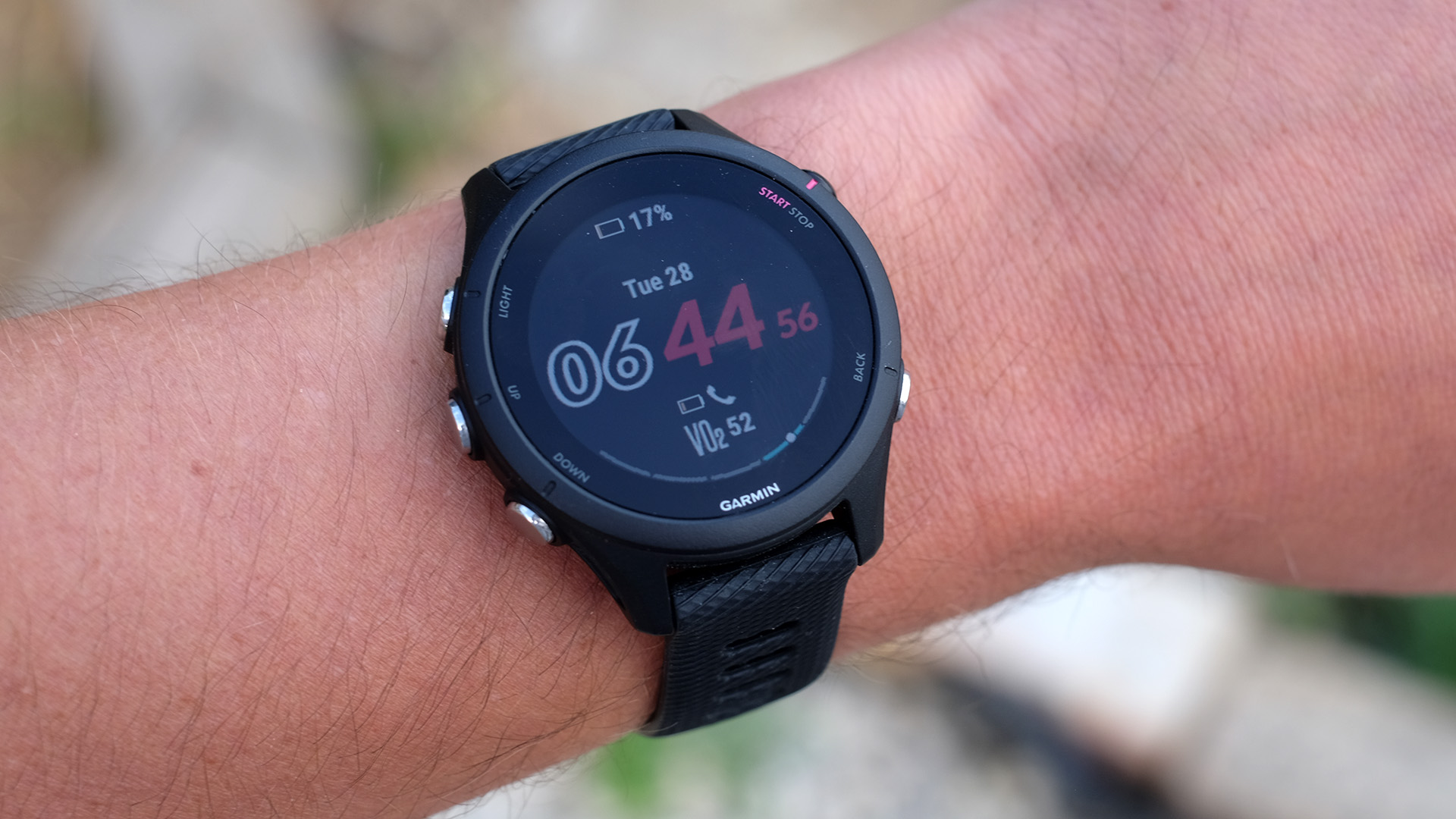
The Forerunner 255 also has Performance Condition. This provides a clear read on your current VO2 Max score, and shows you an indicator of performance relative to your norm roughly 10 minutes into a workout. It’s another neat motivational tool, and one you don’t get in the glossier Garmins at this level, like the Venu 2.
These are just a couple of the entries you might want to slot into the watch’s Widget Glances screen. This sits below the watch face and is where you’ll head for daily stats. You can choose what goes in here, such as the step count, your last run details and Body Battery — another Garmin metric used to judge how well-rested you are.
The Garmin Forerunner 255 also introduces HRV Status. This records your heart rate variability overnight. It’s a measurement of the difference in the gap between your heart beats over time, and a drop in the readings could indicate you are ill or run down.
You’ll also be shown this HRV data in the Morning Report that pops up — you guessed it — each morning. This is another new Garmin feature, and it packages up sleep data along with HRV scores, a quick way to review data you’re unlikely to need to see at other times.
While the best Fitbits probably still have better sleep tracking than Garmin models, we love this watch for the job. Morning report presents sleep tracking data in a pleasant way, and the small and light Forerunner 255S does not feel awkward to wear overnight.
Marrying the breeze with the serious, a Garmin Forerunner 255 offers some of the most important metrics seen in top-end watches like the Garmin Epix 2 and Garmin Fenix 7. However, it does not have everything. You can’t load maps onto the 255. Navigation is limited to a breadcrumb trail that shows where you’ve been — a blank line with a compass indicator to help hikers avoid getting lost.
There’s no Golf mode either. This is something many would never use anyway, but Garmin’s Golf software is great as it includes a database of thousands of courses across the world. The Garmin Instinct 2 has this golf software, and costs the same amount of money.
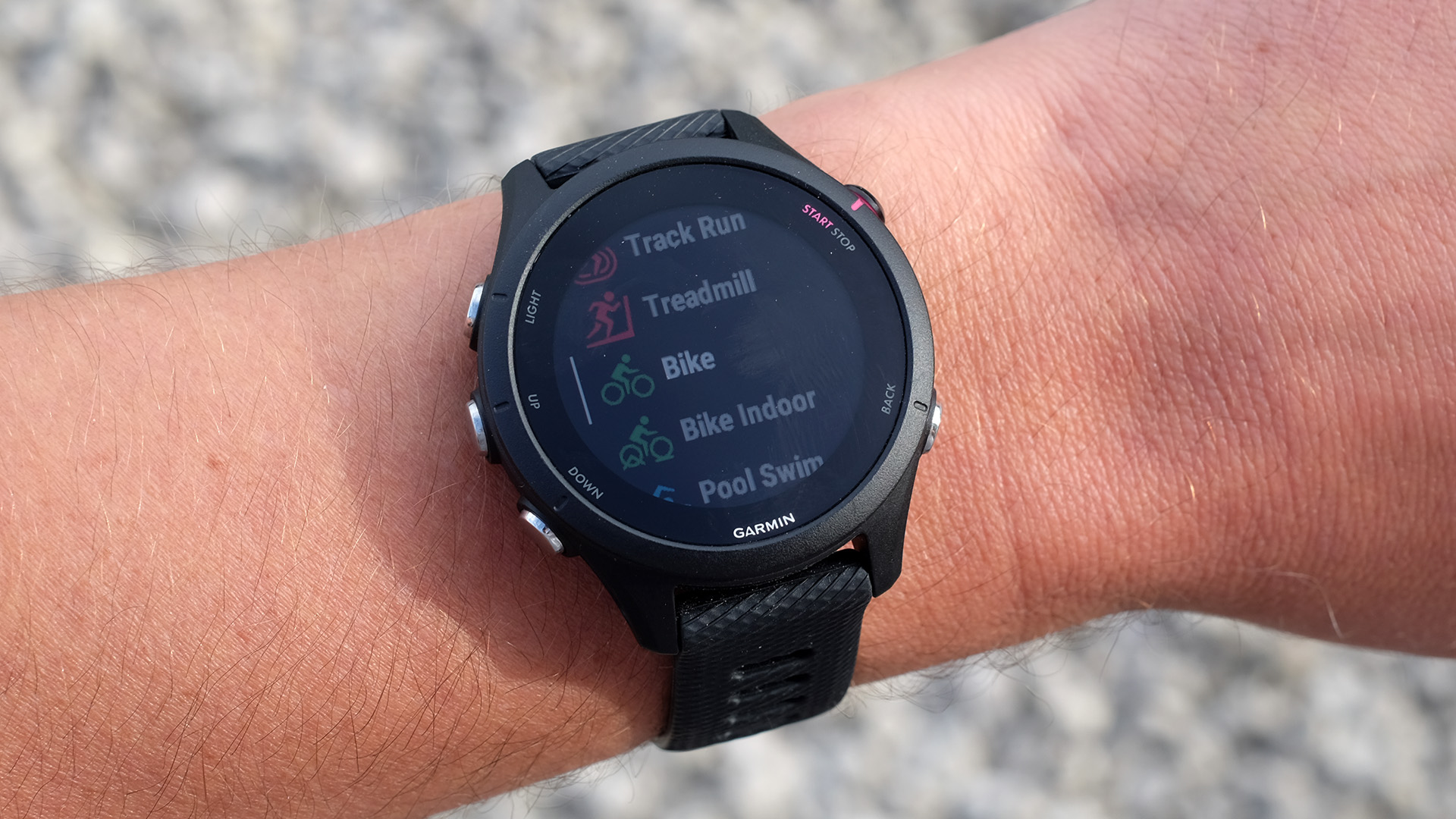
We have good news for cyclists, though. The Forerunner 255 does have Smart Trainer Control, which was missing in the Forerunner 245. This lets the watch connect to bike turbo trainers and control their resistance.
On-watch music support is an optional extra in the Forerunner 255 series. For an extra $50 you get 4GB of room for tracks, which can either be loaded onto the watch manually or synced from Spotify, Deezer or Amazon Music using mini apps you download right from the watch itself.
All versions of the Forerunner 255 can control music played on a phone, making the upgrade appealing mostly for those who want to run phone-free.
Don’t care about on-watch maps or golf? The Garmin Forerunner 255 probably has what you are after.
Performance
We have the version of this watch with the shortest battery life, the 41mm Forerunner 255S. Garmin says it will last up to 12 days in its smartwatch mode. After 48 hours of use without any GPS-tracked runs it had lost 19% charge, suggesting it will last around 10.5 days.
This is close enough to Garmin’s claim, because real-world stamina is naturally going to be affected by how many app notifications the watch receives, how much you interact with it and so on.
An hour of GPS use took 4% from the battery in the default All Systems GPS mode, suggesting that even with a good number of tracked runs the Forerunner 255S should easily last a week. Music playback is the real battery killer, with stamina rated at just five hours for sessions with music and GPS in its most battery-sapping Multi-Band mode.
The watch has the same Elevate heart rate sensor tech as Garmin’s priciest watches. Its results were generally great, but after taking both the Forerunner 255 and Fenix 7 out for several runs we did notice one consistent disparity. Maximum heart rate readings were always slightly lower on the Forerunner 255. We had been doing mixed exertion workouts to give the HR sensor, well, a workout. But this cheaper watch does seem to be less quick on the uptake when you ramp up the effort a bit.
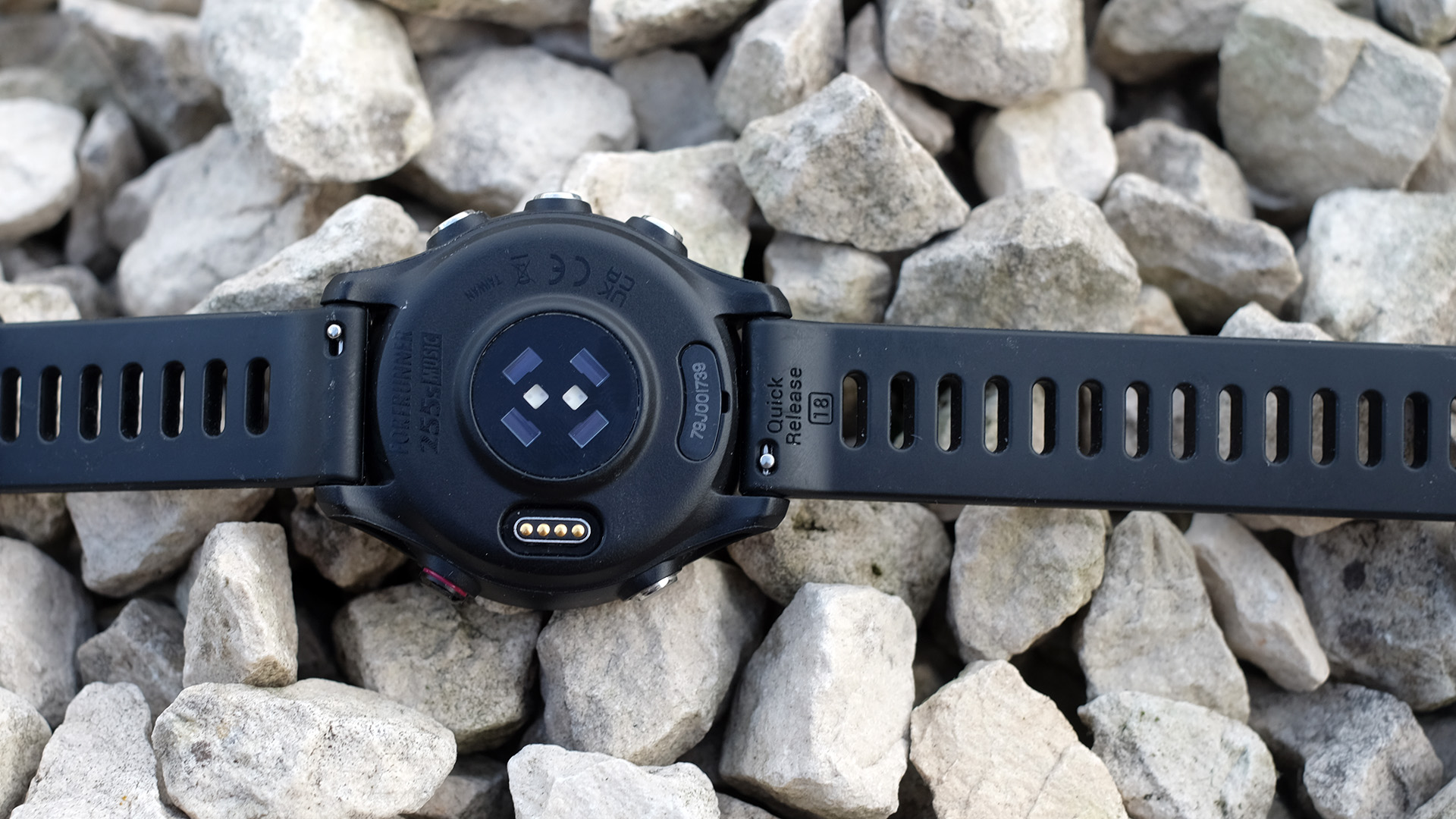
We saw a similar effect in the new Forerunner 955, but would not be surprised if this changes in a future software update. The Forerunner and Fenix watches share what appears to be identical hardware and, if anything, the low weight of the Forerunner 255 should actually make it more reliable.
In better news, the distances recorded by the Forerunner 255 and Fenix 7 GPS systems were almost identical. And while the Forerunner initially took a little long to triangulate, by our last few workouts the triangulation process was over in just a few seconds.
You get very similar tracking results to Garmin’s top-end watches here, and ones extremely similar to those of the Forerunner 955 judging by our testing.
Verdict
The Garmin Forerunner 255 is a moderately affordable running and fitness watch for those who want Garmin’s revered hardcore stats and software with a less hardcore appearance. It’s also much less bulky than the similarly priced Garmin Instinct 2.
It doesn’t have on-watch maps and the 5ATM water resistance isn’t the best Garmin offers. But these limitations just aren’t going to matter for many people.
Battery life of about a week isn’t mind-blowing by Garmin standards either, but again the lighter unobtrusive design will be well worth the sacrifice for some. We’re largely pleased with its tracking accuracy too, with just some slight occasional inconsistencies with our benchmark Fenix 7 at high heart rates.
If you don’t need the maps of the Forerunner 955 or the battery life of the Instinct 2, the Forerunner 255 is a great option and simply super-appealing to wear — particularly in the smaller Forerunner 255S model we reviewed.
Alternatives
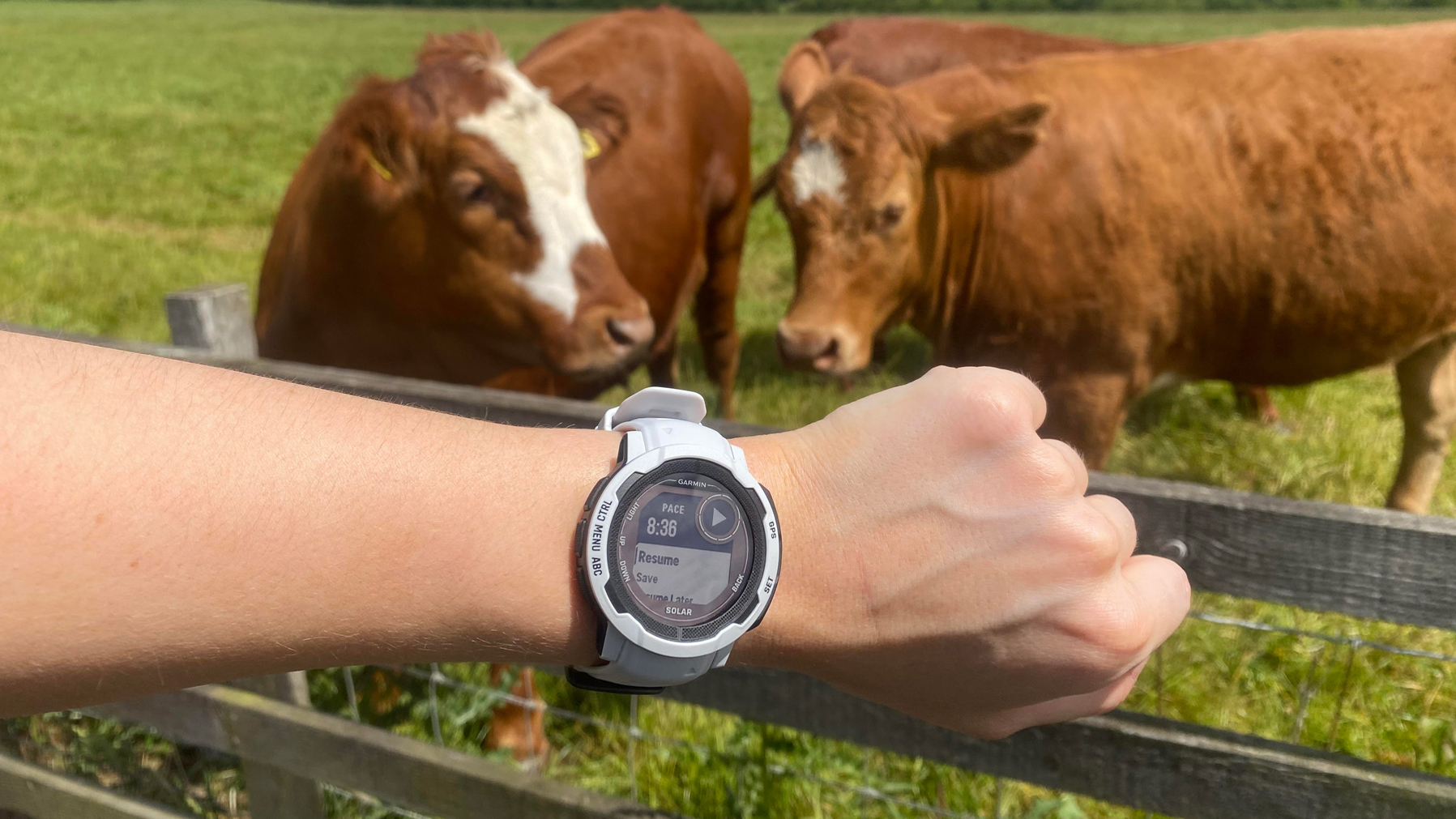
Garmin offers two other watches at almost the same price, the Venu 2 and Instinct 2 (pictured above).
The Garmin Instinct 2 is another exercise enthusiast’s watch, with a couple of clear benefits over the Forerunner 255. Its battery life is far longer and it has 10ATM water resistance instead of 5ATM. However, its display is monochrome, the casing is bulkier and to many eyes it will seem the uglier watch. Screen resolution is lower and the software has a more basic-looking interface. The Instinct 2 is clearly a tougher watch, but those who just want to track runs around their local area may prefer the Forerunner 255.
Garmin’s Venu 2 is a more breezy, glossy alternative with a “smartwatch” bent. It can’t actually run different apps, but has a sharper and more colorful OLED screen and slicker design. The bezel is steel and there’s a light curve to the corners of the screen glass. You miss out on advanced software features like Training Status, though, and if you use the Always On display mode battery life will be significantly shorter. It’s a good option for those who just need an all-purpose fitness tracker, but the Garmin Forerunner 255 is stronger for folks who want more insight into their workout schedule.
Andrew Williams is a freelance journalist based near London. He has written about tech for over a decade, contributing to sites such as WIRED, TechRadar, TrustedReviews, Wareable, Stuff, T3, Pocket-lint and many others. When he's not covering fitness tech, he writes about mobile phones and computing, as well as cameras.
